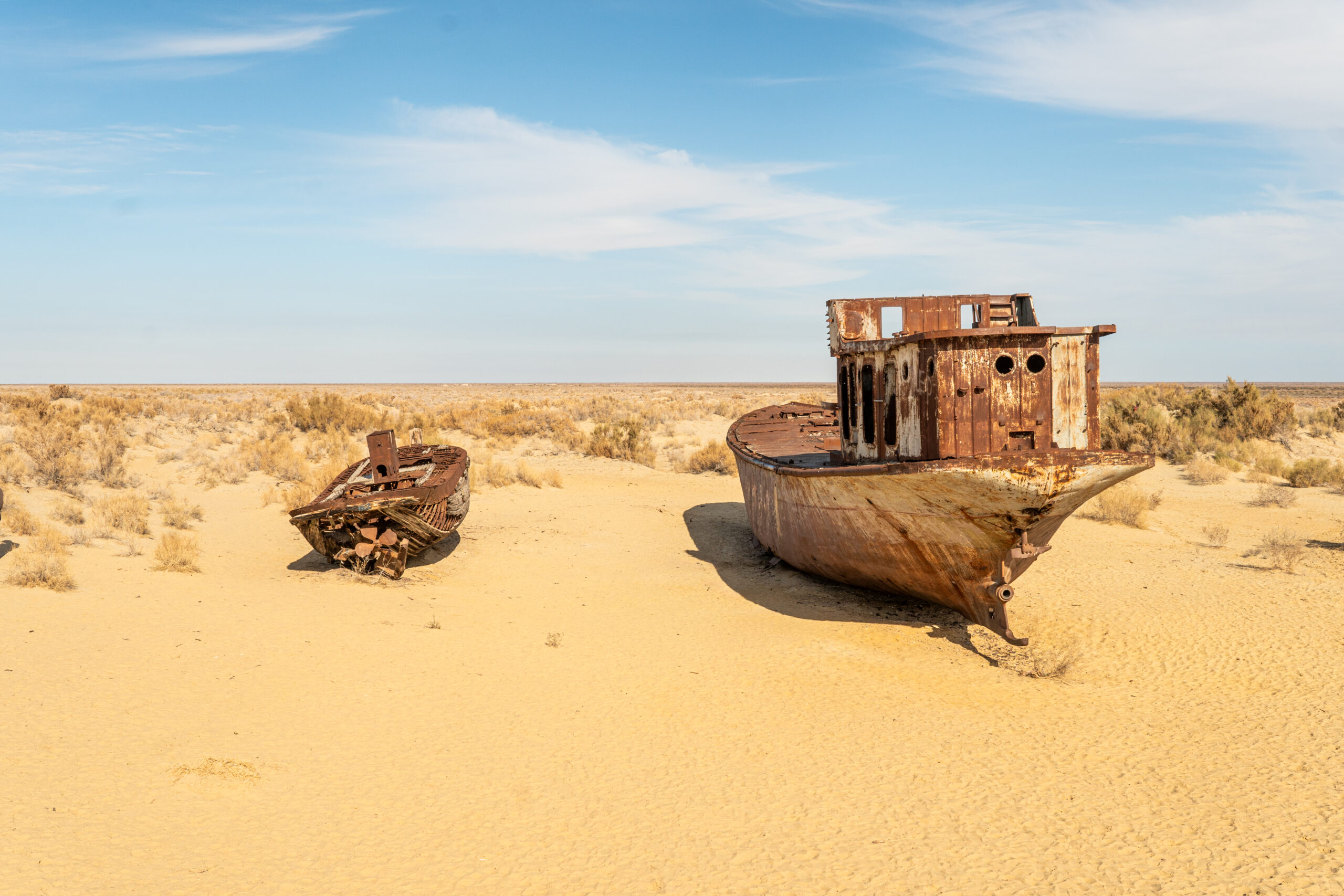There are places and sites we’d love to visit but simply cannot. Either they’ve disappeared due to human folly or nature’s whims, or more commonly, access is no longer feasible because they’re now located in war zones or regions where tourism is strongly discouraged. This doesn’t necessarily mean they’re completely closed off or that things will remain irreversible forever, but still.
Today, we’re heading to a place that’s disappearing before our eyes and can no longer be visited—at least not in the form it existed just a few years ago. That place is the Aral Sea.
Where is the Aral Sea?
The Aral Sea is, or rather was, originally a massive saltwater lake located in Central Asia, shared between Kazakhstan to the north and Uzbekistan to the south, not far from the Baikonur space station. Unfortunately, it’s now famous only as the site of one of the greatest human-caused ecological disasters of the 20th and 21st centuries, slowly causing it to vanish.
Until the 1960s
Until the 1960s, the Aral Sea was the world’s fourth-largest lake by surface area. At its peak, covering 26,300 square miles (68,000 km2)—more than twice the size of West Virginia—it was abundantly fed by the Amu Darya and Syr Darya rivers that flowed into it. The area supported rich biodiversity and thriving fishing industries that sustained surrounding port cities like Aralsk and Moynaq. With its enormous size and salty water, it truly felt like an inland sea, which is why people quickly dubbed it the Aral Sea. But that was before…
Before the Soviet Union, which controlled the lake at the time, diverted the water from both rivers in the 1960s to irrigate vast cotton and rice fields in this traditionally desert region.
Deprived of its primary water source, the Aral Sea began to shrink dramatically, receding spectacularly and splitting into several basins. The two main ones today are the Small Aral (on the Kazakhstan side) and the Large Aral (on the Uzbekistan side). It’s estimated that over half a century, the sea lost 90% of its water volume and nearly as much of its surface area, now covering barely 3,100 square miles (8,000 km2) across its various basins.
Naturally, this reduction has had far-reaching environmental consequences, including dried-up sea beds, desertification, and air and soil pollution from salt residue and pesticides once held in the water. The result: a massive salt desert called the Aralkum, vanished fishing industries, and once-thriving port cities that are now nothing more than ship graveyards in the middle of the desert.
Even though protective and rescue measures have been implemented in recent years—particularly on the Kazakh side where the Small Aral Sea appears to have been stabilized—the general consensus is that the place will never return to its former state. Which means you’ll never see in reality what the Aral Sea looked like in its glory days…

